This yakamein recipe (New Orleans noodle soup) is full of flavor that will satisfy your palates. You will find yourself making this Asian fusion time and time again because it’s so easy.
While cooking it for my family, I often keep my yakamein’s spice level low with chili and a hot sauce as garnishes. This way, even kids can enjoy this flavorful Chinese noodle dish. And everyone can adjust the spice according to their preferences.
What Is Yakamein?
Yakamein is a dish with a rich history. It was originally a Chinese wheat noodle recipe. Then, Chinese migrants brought it to New Orleans. From there, it has undergone some changes and gained popularity as a fusion of Chinese and Cajun cultural cuisine.
The traditional yakamein uses wheat noodles with stewed beef, a hard-boiled egg, and beef broth. But this recipe is a bit different. I’ll use spicy marinated tender beef strips, cajun-spiced pan-fried shrimp, and a soft-centered boiled egg.
Moreover, I love to garnish my yakamein with chili flakes, spring onions, and soy sauce. The versatility of yakamein spice palette makes it an ideal dish to cook for multiple people.
Tools
To make yakamein at home, I recommend you use the following kitchen tools:
Ingredients
To cook my take on traditional yakamein, you will need all of the following ingredients to replicate this dish.
How To Make Yakamein
Making yakamein isn’t hard. Follow these four steps to make a delicious yakamein at home.
Step 1: Marinate Your Beef
In a bowl, rub your beef with 2 tablespoons of olive oil, 2 tablespoons of creole seasoning, onion powder, salt, pepper, and soy sauce. Then use cling film to cover your bowl and place it in a refrigerator for 30 minutes.
Step 2: Marinate The Shrimp
In another bowl, mix your peeled shrimp with 1 tablespoon of olive oil and the rest of your creole seasoning. Again, cover this bowl with cling wrap and refrigerate it for at least 30 minutes.
Step 3: Cook The Beef & Soup Base
In a large pot, cook the marinated beef with olive oil at medium to high heat. Then pour in your beef broth, garlic, fish sauce, and white vinegar. Stir the soup for a bit and place the lid on top.
When the soup boils, reduce the heat to a simmer and cook for 1 hour and 20 minutes or until your beef is tender.
Step 4: Cook Your Shrimp
After 1 hour and 20 minutes, add your shrimp to the soup pot. Allow to cook for 5 – 10 minutes or until the shrimp are cooked through.
Step 5: Cook Your Pasta
Approximately 20 minutes before serving, cook your pasta. You need to cook it for 8 – 12 minutes or until the pasta is cooked. Drain pasta and set aside for serving.
Step 6: Serve Your Yakamein Soup
In individual bowls, put your preferred amount of pasta. Then spoon your yakamein soup on top of the pasta, making sure to get both beef and shrimp in your bowl. And sprinkle some scallions on top. Enjoy!
Tips And Serving Suggestions
This dish is quite simple to master. And making it can be easier with some tips below. Aside from them, don’t forget to look at serving suggestions for different ways to level up your yakamein.
Tips For Yakamein
The following simple tips can really help you to master all the individual components that make yakamein so special.
What To Serve With My Yakamein?
Although a basic yakamein without any accompaniment is already tasty, I recommend adding these ingredients to kick up the flavor.
How To Store Leftover
Sometimes you may cook too much, and there are some yakamein noodles. Don’t throw them away. Learn different storage methods, so you can have them prepared for the future. Remember not to store the noodles with the broth, or they’ll get soggy.
In the fridge, the stock can last for about 3 days in an airtight container. You can leave the shrimp out to prolong the date by up to 5 days.
Yakamein – A Lively Chinese Cajun Dish
Warm, flavorful yakamein can liven up any cold day. And it’s so easy that you can cook this at home with no stress at all. My handy tried-and-true tips will ensure that you have tender cooked beef, succulent shrimps, and a soft-boiled egg for your noodles.
So, wow your friends and family with this toothsome yakamein. And remember to share this recipe, so you guys can do it together. If you have any trouble making it, don’t hesitate to comment below! I’ll help you immediately!
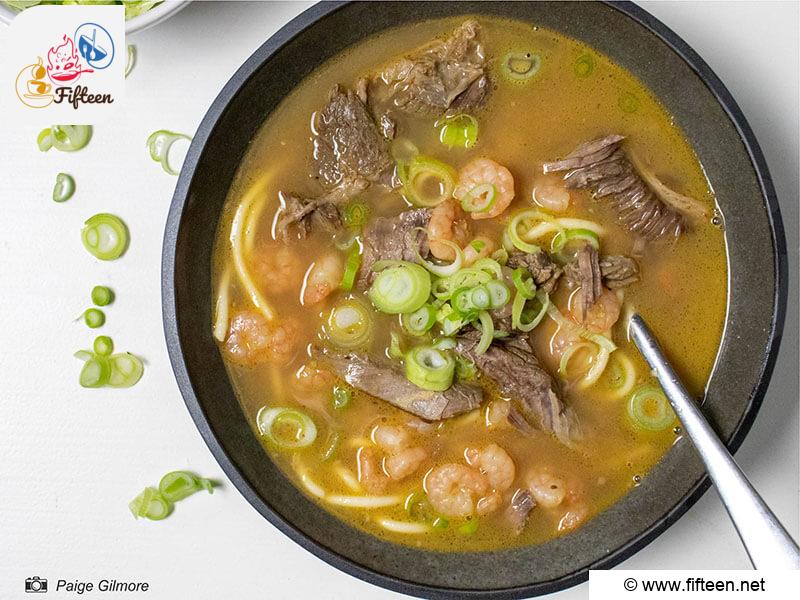
Yakamein Recipe
Equipment
- Large pot
- Chopping board and sharp knife
- Large spoon
- Bowls
- Cling wrap
Ingredients
- 1 pound beef
- 2 tablespoons soy sauce
- 2 tablespoons creole seasoning
- 3 tablespoons extra virgin olive oil
- 2 cloves garlic (chopped)
- 2 cups frozen shrimp (peeled)
- 5 cups beef broth
- 0.3 cup fresh scallions
- 1 tablespoon white vinegar
- 1 teaspoon fish sauce
- 1 teaspoon onion powder
- Salt and pepper to taste
- 4 serves wheat noodles
Instructions
- Marinate your beef in a bowl with 2 tablespoons of olive oil, 2 tablespoons of creole, onion powder, soy sauce, salt, and pepper. Massage the ingredients together with your hands. Use cling film to cover the bowl and marinate in the refrigerator for 30 minutes.
- Marinate your shrimp with 1 tablespoon of olive oil plus 1 teaspoon of creole seasoning. Place the cling film-covered bowl in the refrigerator.
- Cook your beef in a large pot on high heat with 1 teaspoon of olive oil. Then, fish sauce, white vinegar, and broth. Cover and simmer for 1 hour and 20 minutes.
- After your yakamein soup has cooked, add the marinated shrimp and cook for another 5 – 10 minutes.
- Fill your medium pot ¾ full with water. Then add your pasta and cook it over medium to high heat until cooked (approximately 8 – 12 minutes). Set aside once cooked.
- Add an individual amount of pasta to a bowl.
- Spoon yakamein soup over the top, and sprinkle with scallions.


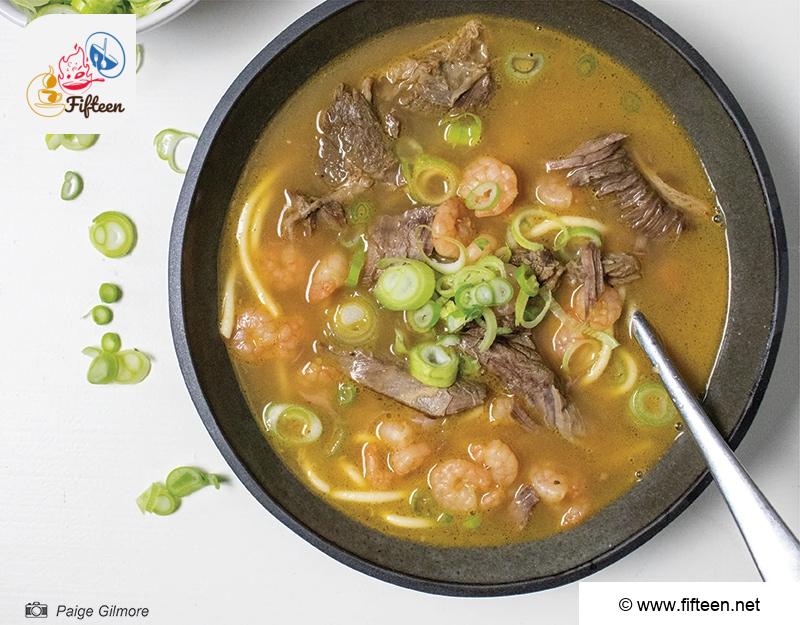
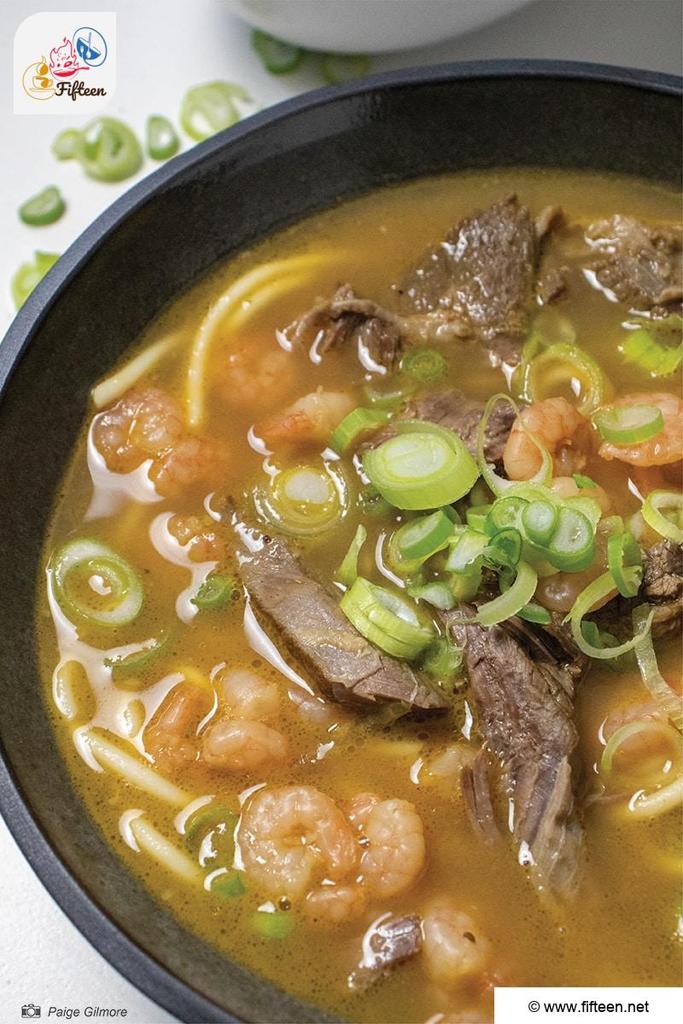
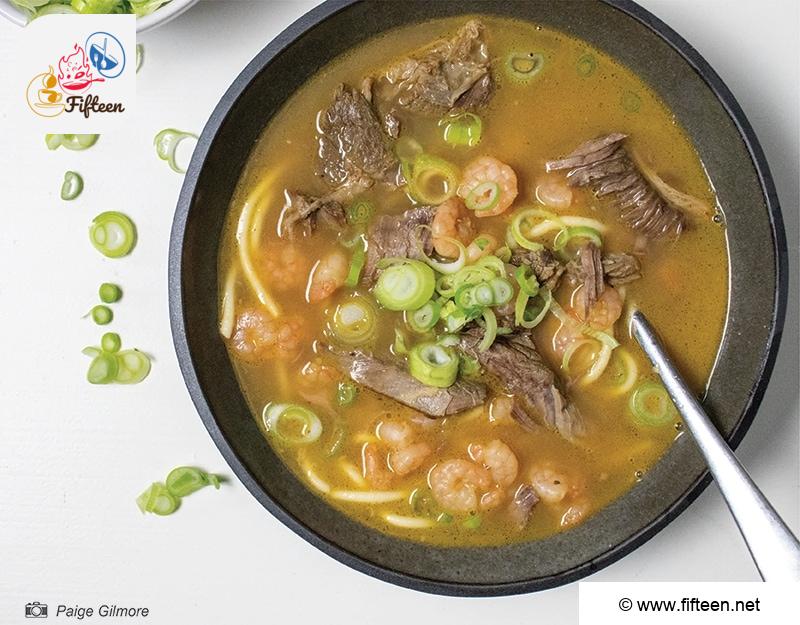
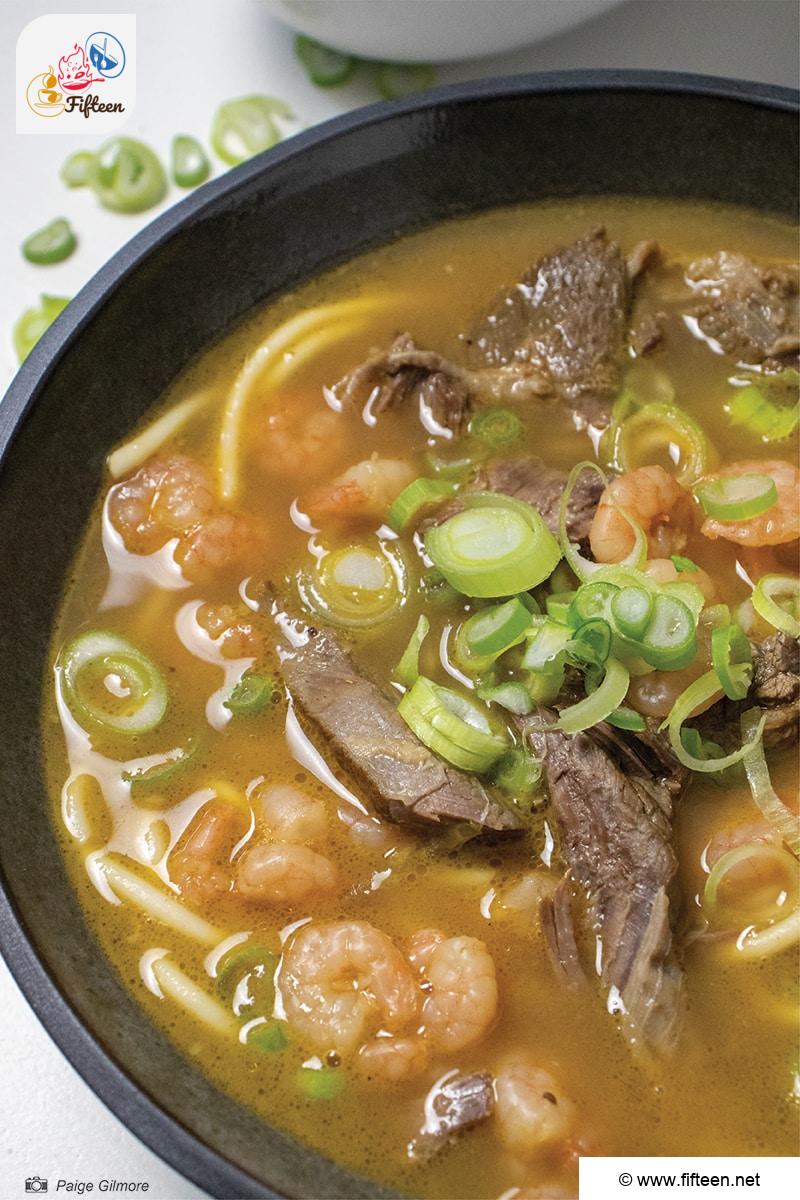
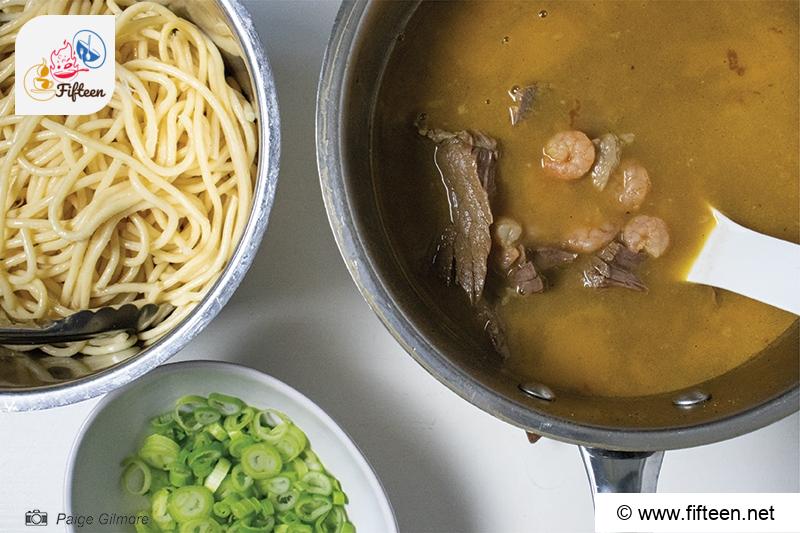
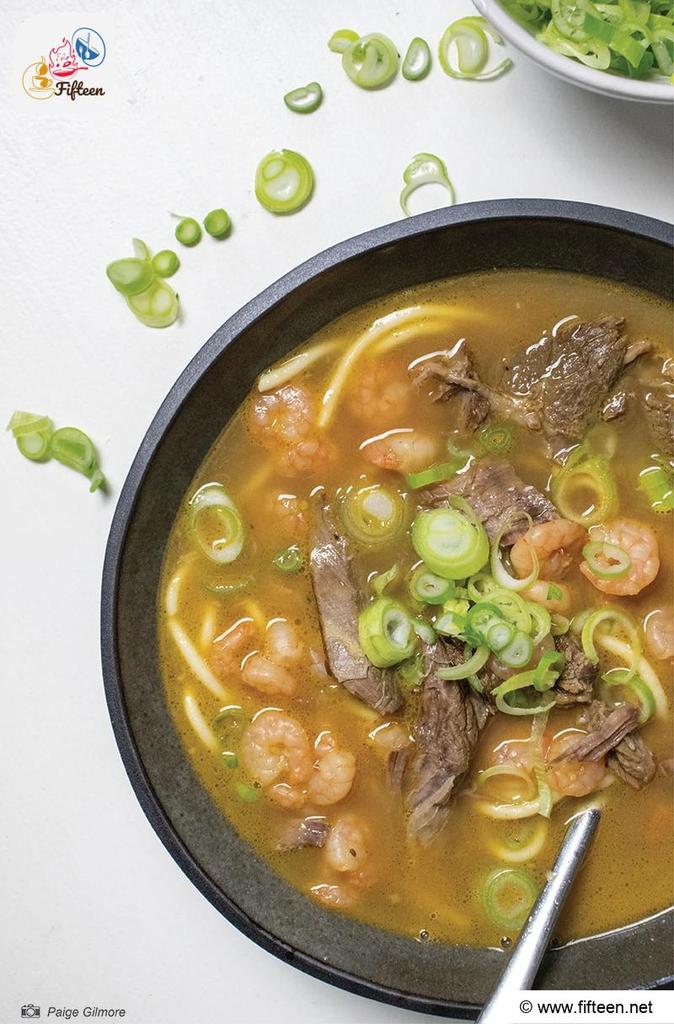
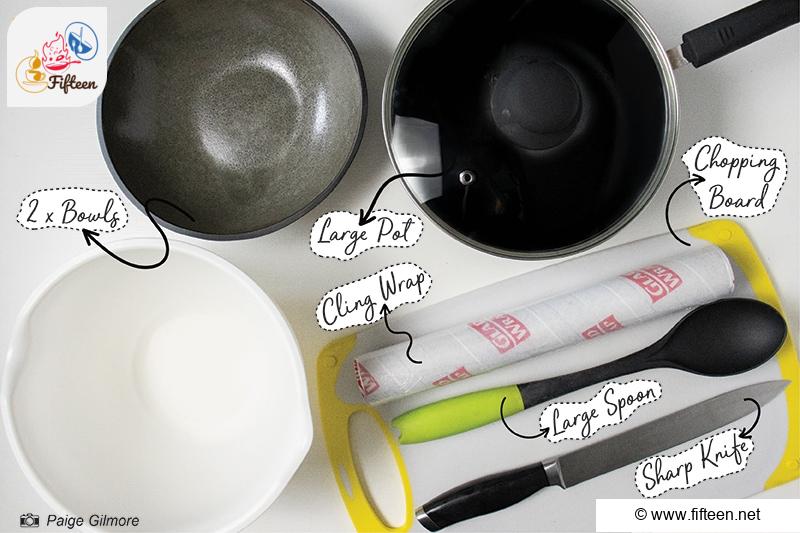
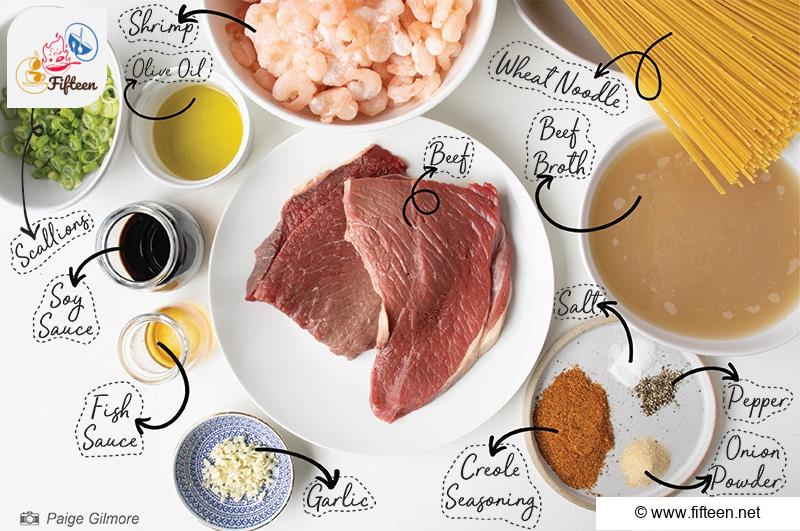
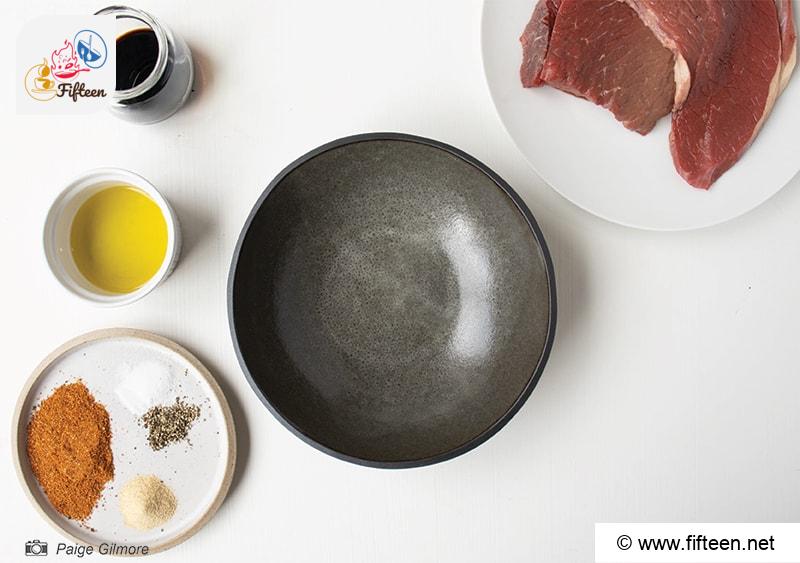
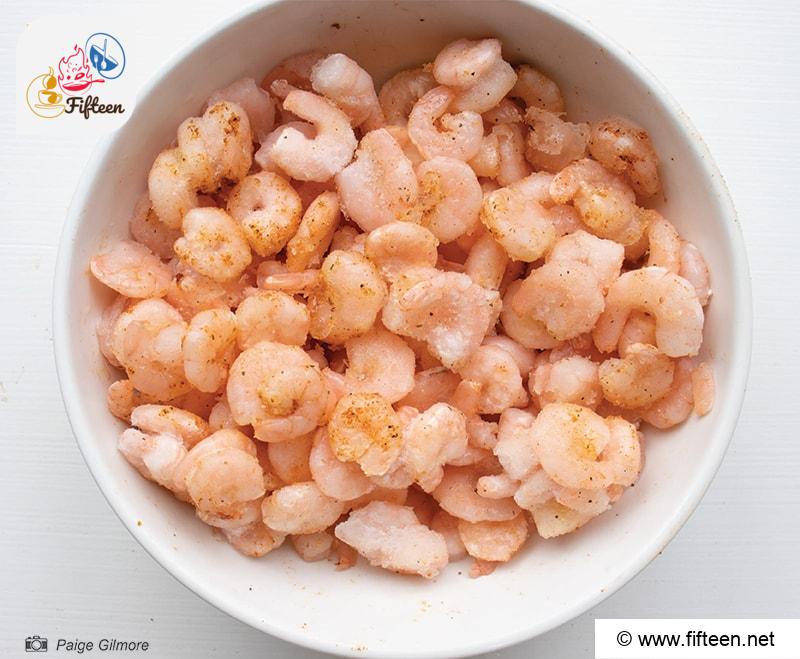
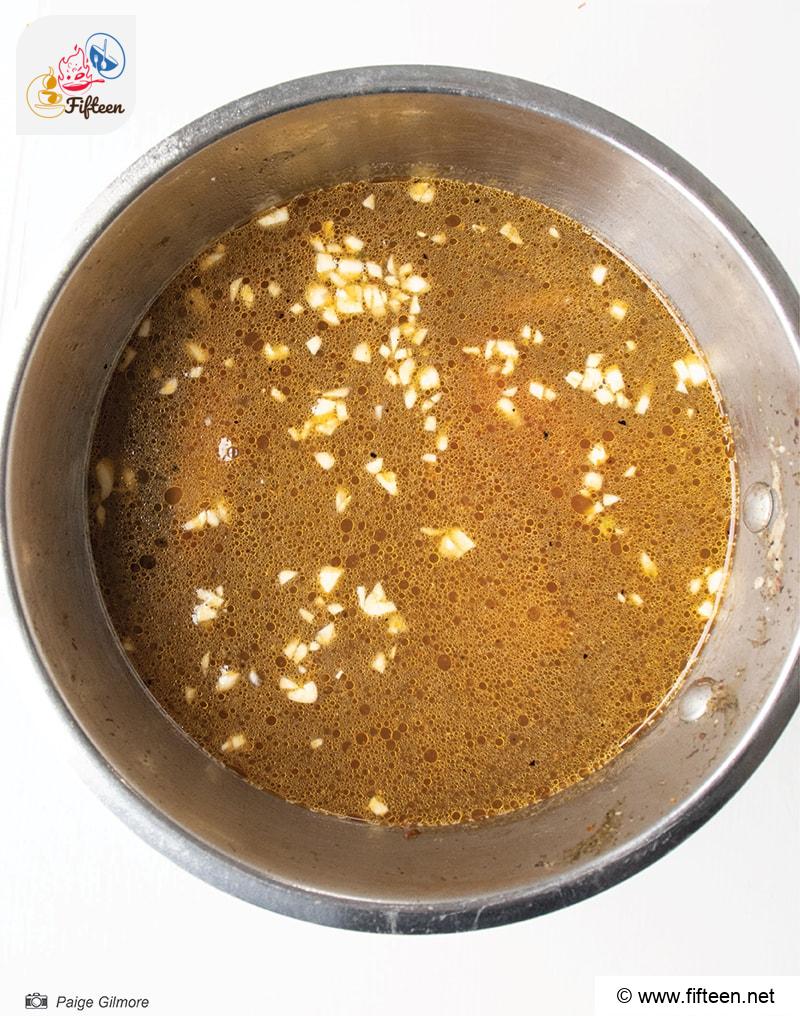
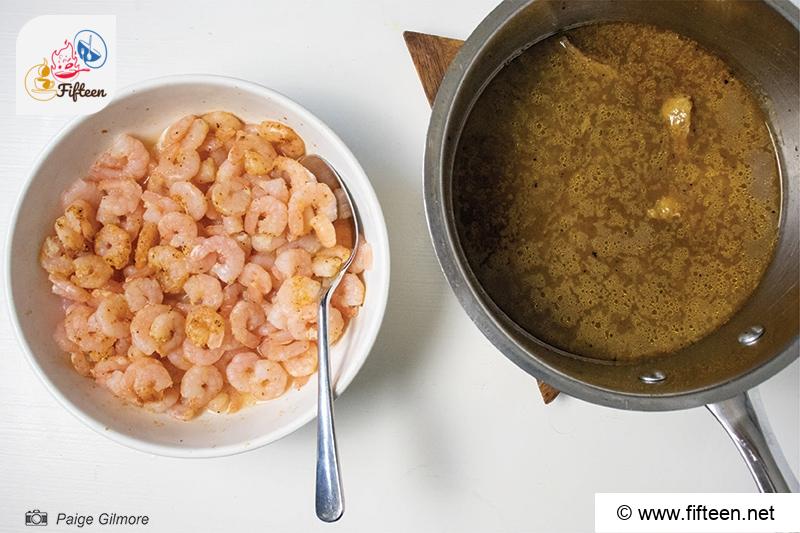
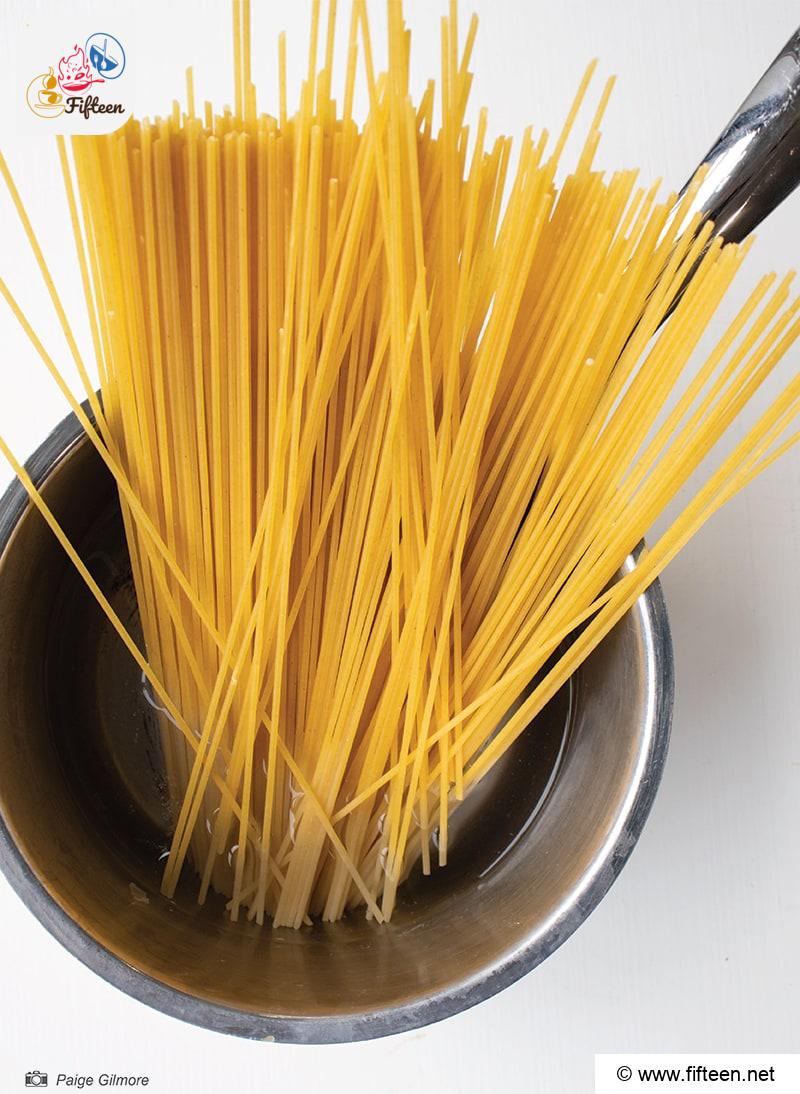
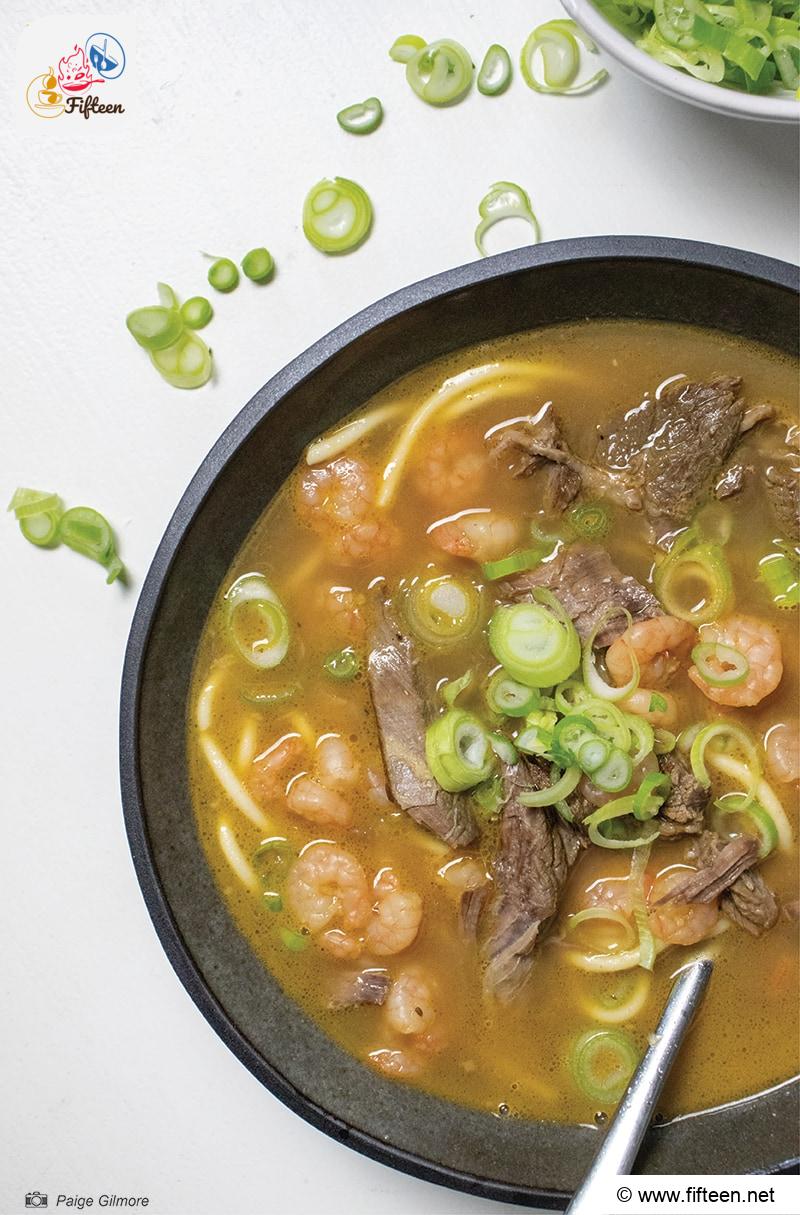
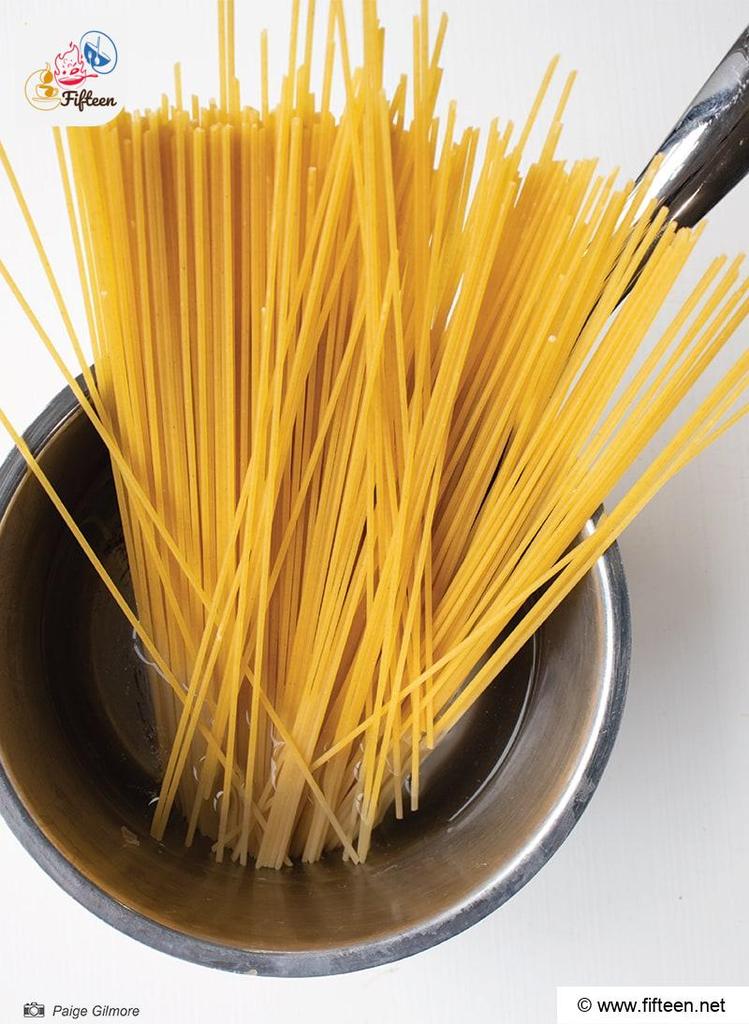
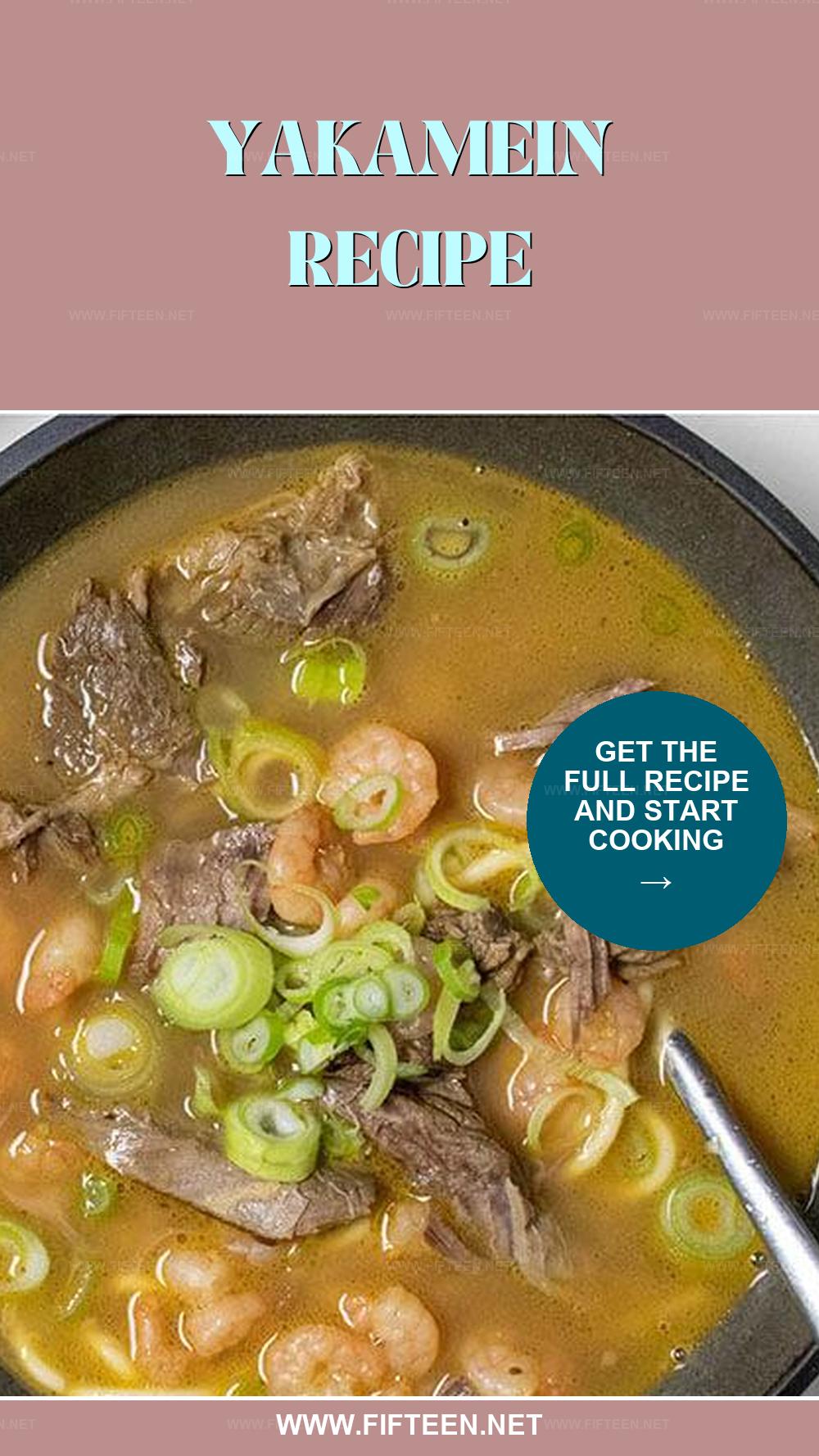
Paige Gilmore
Content Writer
Expertise
Home Cooking, Food Editor, Cooking-video Maker, Food Styling, Food Photography, Cooking-video Maker, Data Analysis, Business Owner, Strategy & Marketing Director
Education
Auckland University of Technology, New Zealand
Auckland University of Technology, New Zealand
The Culinary Collective, New Zealand
Paige Gilmore is a versatile content creator from Auckland, with a focus on culinary arts and a distinctive foundation in science and analytics. Her varied skills enrich her cooking, enabling her to combine precise techniques with imaginative style in the kitchen.